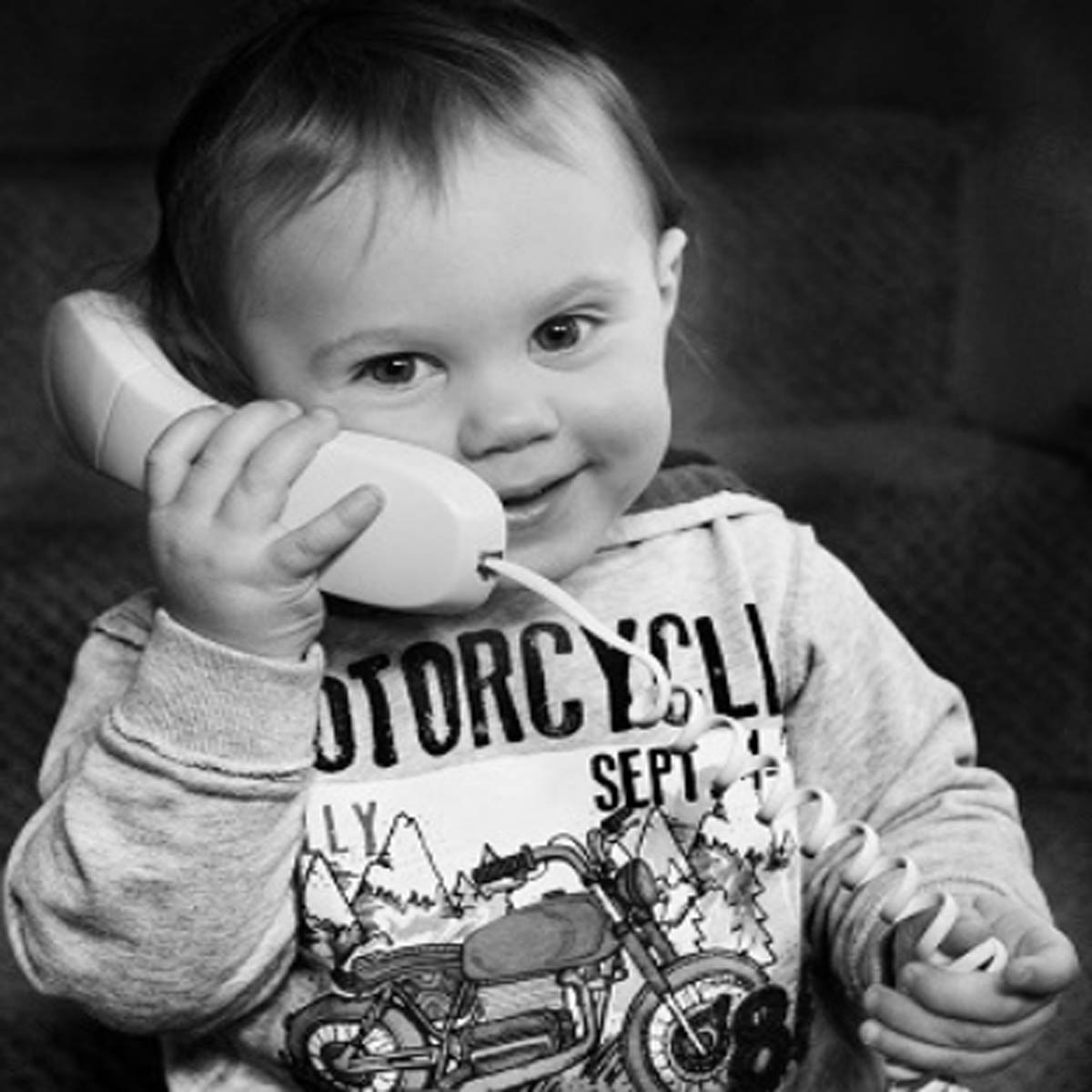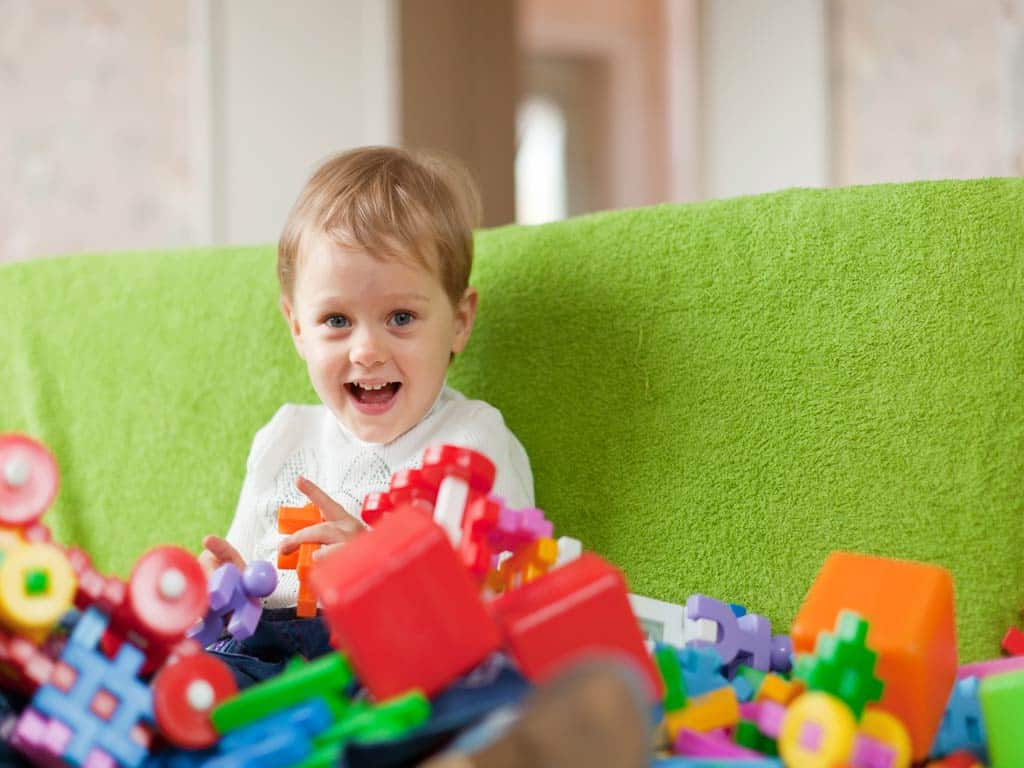Your toddler is learning new words every day and really wants to talk to you. Here are a few expert tips on what to expect and how to keep the conversation flowing.

Your toddler has powerful communication skills.
Noise? There’s lots of that.
Tantrums? Maybe a good one in the supermarket, after you’ve told your little one there’s no eating the produce on display.
Gestures? Yes, we all know these. Arms up is the universal sign for “carry me!” But you’ve left the pram in the car, and you’re holding two big bags of groceries. Did I mention the tantrum that already happened in aisle 2?
What about words? Your toddler is absorbing and will be starting to use them. The important thing to look for is that their word usage is steadily progressing.
It’s common for parents to wonder how many words their child should have at different ages — and more importantly, if their child is on track. Here is our guide on language understanding and talking based on information provided by Speech Pathology Australia (SPA) and the American Speech and Hearing Association (ASHA), with notes for when you should seek further information.
18-24 months
| Understanding | Talking |
|---|---|
|
|
What can you do to help?
- Talk when walking, driving or doing activities. Research has shown that families with higher-income backgrounds tend to talk to children more — averaging 2,153 words per hour vs. 1,251 words per hour in low-income families. This equates to a gap of 30 million words by age 3. This gap only widens as they get older. So let’s start talking to our kids more!
- Talk about what you see, and use descriptive language. “Look, there’s a butterfly! Look at its colourful wings. It’s fluttering around the tree. It’s landing on the leaves.” “Ok, let’s put the cereal in bowl. Let’s pour the milk in. Can you see the bubbles? You can stir it with a spoon.”
- Use simple but grammatically correct speech that is easy for your child to copy.
- Expand on words. “Yes, that is a teddy! It’s a big, fluffy teddy.”
- Look at books together. Take time to look at pictures and talk about what you see. It’s okay to flip around in the book. By 2, your child will start to want to follow short stories.
- Implement the “Magic 8” strategy. (See last month’s article Born to Talk)
2 – 3 years
| Understanding | Talking |
|---|---|
|
|
What can you do to help?
- Expand vocabulary. Show your child you’re interested by repeating what they say and expand on it. “Yes, that is a concrete mixer. It has got big wheels. It’s yellow and black. That front part where the driver sits is called the cab. The part that goes round is a drum. It makes concrete.”
- Take your child out and talk about what you see before, during and after the trip.
- Ask questions when your child makes a choice rather than just answer yes or no. “Would you like an apple or a pear?”
- Read. Talk about books. Talk about what you can see on a page. Teach synonyms for common words to enrich their vocabulary (big, huge, giant, enormous).
When should you seek help?
At 18 months if your child:
- does not have at least 15 words at 18 months
- is not gaining new words
- loses skills they once had.
At 2 years if your child:
- does not have at least 50 words by age 2. Traditionally a child was considered a “late talker” if they could say less than 50 words on their 2nd birthday. Now studies show that this is too conservative, and by age 2 there should be more. So, we suggest that it’s better to err on the side of caution and seek professional speech pathology advice if your toddler has fewer than 50 words between 18-24 months.
- loses skills they once had.
Start keeping a list of your child’s words. They may not be totally clear, but that’s okay. This is toddler talk after all. To learn more about early communication skills and toddler talk groups, visit Talkshop Speech Pathology, or pop into our weekly Sydney-based free drop-in clinics to chat to one of our clinicians.
And if we see you in aisle 2 with your toddler on the floor and a split bag of grapes, we’ll understand that your child is just powerfully exercising their communication skills.
Mimi Naylor has been a speech pathologist for 15 years. She is the clinical director of Talkshop Speech Pathology (Formerly The SPEECH Centre Forestville) in Sydney. She has been a clinical educator for more than 10 years, supervising speech pathology students and lecturing in clinical practice at the University of Sydney. She is also a mum of two school-age children and a 3 year old, so she knows all about what happens in aisle 2.

